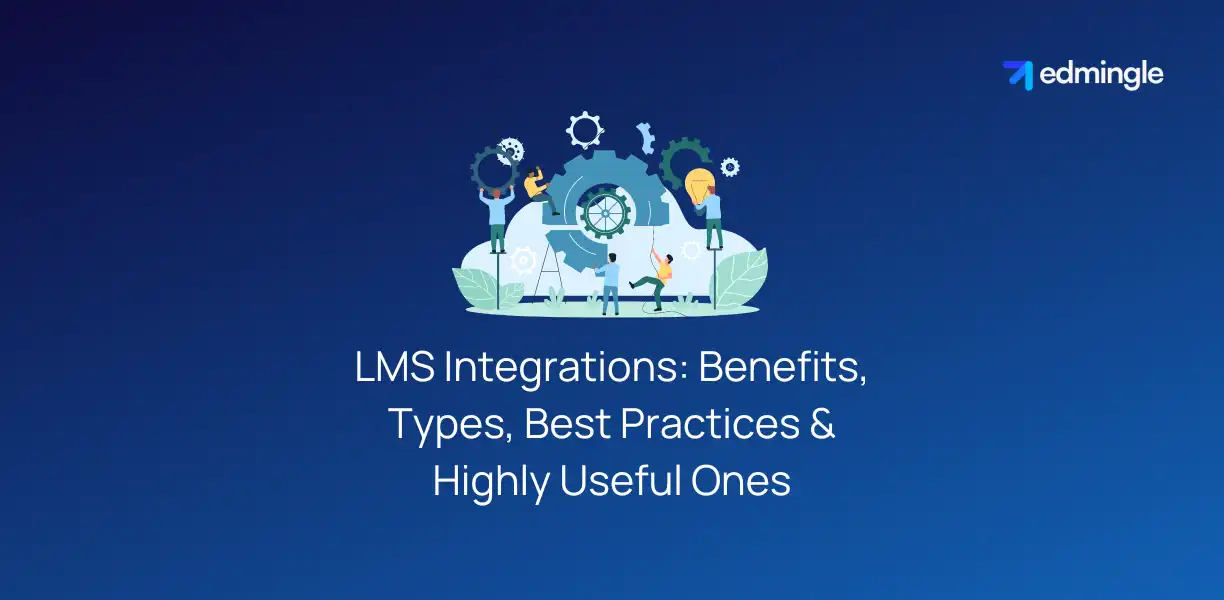
Imagine a world where seamless learning is not just confined to the four walls of a classroom but extends into the digital realm.
This is the promise of LMS integrations. A promise that is transforming the way knowledge is imparted and absorbed in the 21st century.
Learning management system integrations unlock endless possibilities. Helping streamline administrative tasks & enrich the learning environment.
In this blog, we’ll explore in depth everything you need to know about them. From their benefits, types, challenges, best practices to the most useful ones of all time.
What does an LMS Integration mean?
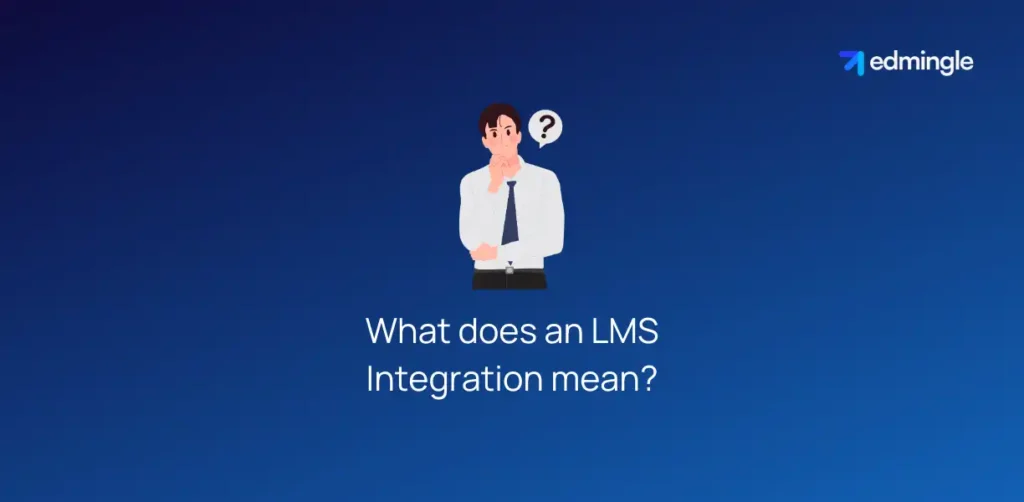
It refers to the process of connecting an LMS with other software tools & platforms. With the aim to enhance its functionality and streamline educational or training processes.
Complementing the features of an LMS. These allow for a seamless exchange of data & functions. Happening between the LMS & third-party applications.
Thereby, creating a more cohesive and efficient learning environment.
6 Key Benefits of Learning Management System Integrations
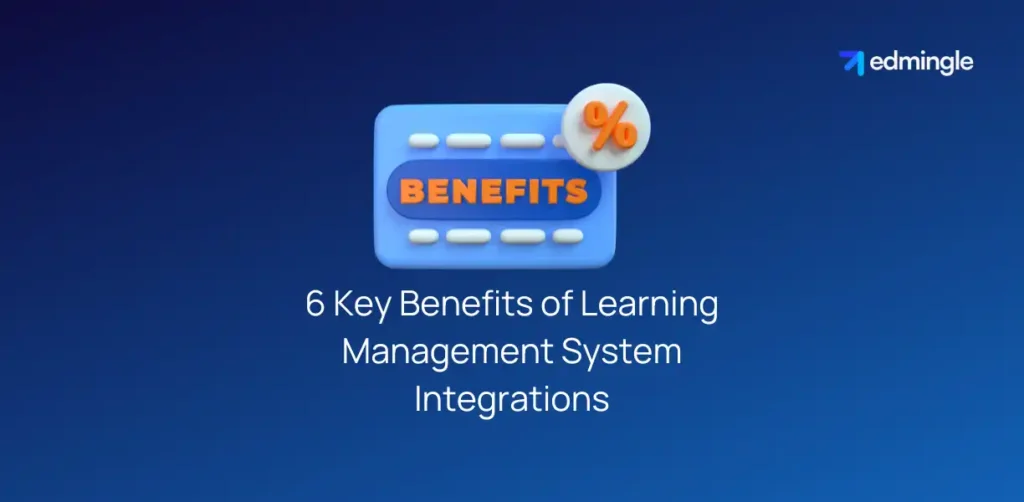
With a plethora of benefits, these significantly enhance the learning experience. While streamlining administrative tasks & fostering a more effective learning ecosystem.
Here are some of the key benefits of LMS add-ons:
1.Streamlined Administrative Processes:
They automate repetitive tasks like enrollment & attendance tracking. Apart from grade recording and data synchronization across platforms.
This reduces manual processes like data entry, minimizes human errors & saves time. Hence, allowing educators & administrators to focus more on instructional design.
2.Enhanced Accessibility, Convenience &Learning Experience:
It provides learners with a richer, more engaging learning experience. Hence, encouraging active participation and deeper learning.
Tools like interactive simulations, video conferencing & online discussion forums can be accessed seamlessly. From within the LMS environment.
Also Read: Active vs Passive Learning.
3.Consolidated Data & Insights:
These facilitate the consolidation of data from various sources. Thus, providing a comprehensive view of learner engagement, performance and progress.
These insights enable educators to make informed decisions. While identifying trends and improving course content & teaching strategies. Thereby enabling the creation of personalized learning journeys.
4.Enhanced Collaboration & Communication:
With tools like email, chat and forums, LMSs can foster a collaborative learning environment.
Learners can easily communicate with peers and instructors. Alongside sharing resources and working together on projects. Thus, enhancing the sense of community and support.
Related Article: How Social Learning Drives Learner Engagement & Retention?
5.Scalability, Flexibility & Cost Efficiency:
Since new tools can be added as & when required, without disrupting the existing ecosystem. Institutions are able to easily scale their offerings.
This flexibility ensures that training programs can evolve & adapt to changing technologies & learning needs.
Also, since administrative tasks are now automated, resource allocation is optimized. This reduces the need for physical materials & decreases workload. While enhancing the ability to accommodate more learners without additional costs.
You might also like to read:
- Edmingle Scalability & Flexibility.
- Reduce Your Operational Cost by 20% with Edmingle.
6.Regulatory Compliance & Security:
These can ensure the LMS comply with educational standards and data protection regulations.
Secure data exchange and compliance protect learner information and institutional integrity. With standards such as GDPR or FERPA
Also read about: LMS for Compliance Training and LMS Security Features.
In summary. These offer a more dynamic, efficient and personalized learning environment. One that benefits learners, educators and institutions alike.
Difference Between an API and an LMS Integration
In the world of e-learning, integrations are often confused with APIs.
API, short for Application Programming Interface, are a set of rules & specifications. Followed by software programs to communicate with each other. Whereas the latter is done to enhance its functionality.
The table below outlines the key differences between both.
| Aspect | API | LMS Integration |
|---|---|---|
| Purpose | To enable the interaction between different software applications. Hence, allowing them to share data and functionalities. | To extend the capabilities of an LMS by integrating it with other tools, platforms or systems. |
| Scope | Broad, not limited to LMS. APIs are used in various types of software and platforms. | Specific to LMSs. Focuses on enhancing the educational or training environment. |
| Functionality | Facilitates the direct interaction between different software systems. | Enables the LMS to work seamlessly with other software tools. In the process, improving the learning experience. |
| Implementation | Requires programming knowledge to develop or use effectively. | Can often be configured within the LMS settings without extensive programming knowledge. |
| Use Cases | APIs are used for a wide range of purposes beyond education. This includes web services, data exchange and service integration. | Specifically used to add educational functionalities. Such as content delivery, analytics and communication tools. |
| Examples | Payment gateway APIs, social media APIs, data service APIs. | Integrating video conferencing tools or connecting to a student information system (SIS). |
| Flexibility | Highly flexible. As it allows for custom integration and interaction between any systems that expose an API. | Depends on the LMS’s ability to support integrations and the availability of plugins. |
| Technical Complexity | High. As it requires understanding of both the API and the systems being connected. | Varies from simple configurations to complex ones requiring custom development. |
Thus, now we know that both differ in their roles, purposes & applications. Within the context of software development and educational technology.
Also Read: LMS vs LCMS.
16 Types of Learning Management System Integrations
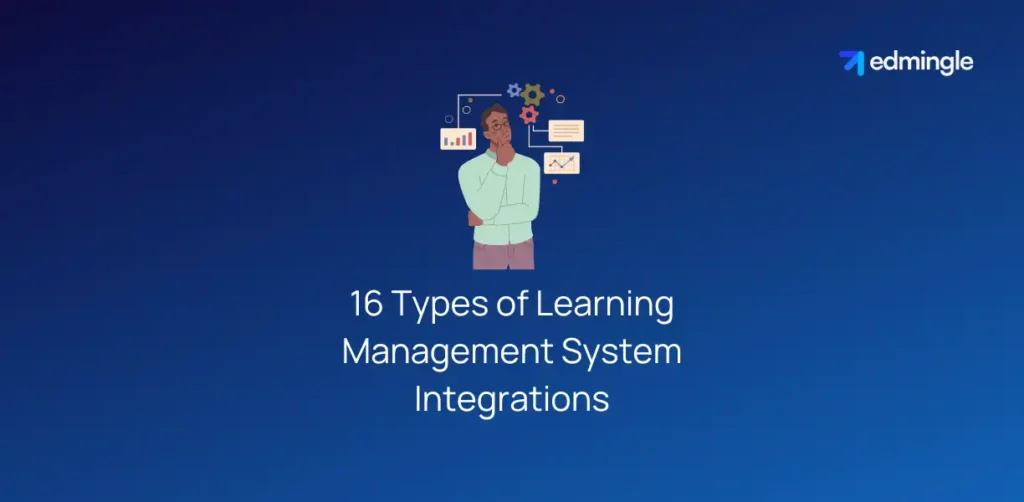
Half knowledge is more dangerous than no knowledge.
This quote holds true as most trainers & admins pursue technical integrations without knowing the types that exist. And in this process, end up being dissatisfied with their end product.
Here are the different types of LMS integrations.
1.Single sign-on (SSO): These simplify access to educational platforms, allowing users to log in once & gain access to multiple systems. This streamlines the user experience, making learning more accessible.
Related Article: E-learning Accessibility.
2.Content authoring: These enable educators to create, manage & deliver engaging and interactive content. Directly within the LMS. Tools like interactive quizzes and multimedia presentations enrich the learning material.
3.Third-party content: By integrating external content libraries & courses. Learners gain access to a broader range of resources. From academic journals to specialized training materials, enhancing the breadth of education offered.
4.Video conferencing and webinar: Incorporating live video meetings & webinars facilitates real-time interaction. Making distance learning more personal and engaging by closely mimicking the classroom experience.
Also read: LMS for Online Teaching.
5.Customer Relationship Management (CRM): It helps institutions manage learner relationships more effectively. From enrollment through alumni engagement, by tracking interactions & progress.
6.Human Capital Management (HCM) or Human Resource: Integrating these streamlines training and development processes in corporate settings. Aligning employee training outcomes with business operations & goals.
7.Digital adoption platform integrations: These guide users through the LMS features and functionalities. While improving user adoption & enhancing learning experience through interactive help and walkthroughs.
8.LRS integrations: Short for Learning Record Store, these enable the collection & analysis of detailed learning data. Providing insights into learner behavior & preferences, crucial for personalized learning experiences.
9.Social media integrations: These foster community and collaboration among learners. Allowing for the sharing of insights & achievements beyond the confines of the LMS.
10.xAPI integrations: Experience API (xAPI) tracks and records learning experiences from a wide range of sources. To offer a comprehensive view of a learner’s journey and facilitating personalized learning paths.
11.Webhooks: These allow real-time data sharing & actions between the LMS and other applications. Alongside automating workflows and ensuring the systems are always in sync.
12.eCommerce integrations: For institutions offering paid online courses, these facilitate course sales directly through the LMS. Apart from seamlessly handling registrations, payments and access management.
13.Calendar integrations: Syncing calendars like Google Calendar with the LMS helps learners and educators keep track of course schedules, deadlines and events. Thereby, ensuring everyone stays organized and informed.
14.Gamification integrations: Incorporating elements of game design, like badges & leaderboards, can motivate learners. Through rewards & recognition, making learning fun and engaging.
15.Payment gateway integrations: Secure payment integrations enable smooth transactions for paid courses. Providing a variety of payment options and ensuring financial data is handled safely.
16.Learning Analytics Integrations: Analytical tools like Google Analytics integrated with the LMS offer valuable insights. Majorly into learner engagement, progress and outcomes.
Each type of LMS integration plays a unique role. And as the world of education continues to evolve, so too will the possibilities offered by these powerful integrations.
Challenges of Implementing an LMS Integration
Implementing an LMS integration comes with its unique set of challenges. These hinder the achievement of a smooth and effective learning process.
Here are the major challenges faced while implementing an LMS integration:
| 1.Tech Stack Compatibility and Integration Issues | 2.Data Privacy and Security Concerns |
| 3.Scalability and Performance Impacts | 4.User Adoption and Change Management |
| 5.Customization and Maintenance Costs | 6.Ensuring Consistent User Experience |
| 7.Data Synchronization and Integrity | 8.Compliance with Educational Standards |
These challenges underscore the importance of a thorough planning. Along with technical expertise and strategic resource allocation for a successful implementation.
Also read about LMS Pricing.
Best Practices for Implementing a Learning Management System Integration
Now that we know almost everything about learning management system integrations. This is where we guide you. With the best practices to solve the challenges that stand in the way to a robust implementation.
| Step 1 | Define Clear Objectives and Business Requirements |
| Step 2 | Conduct Thorough Research and Planning |
| Step 3 | Data Privacy and Security |
| Step 4 | Opt for Scalable Solutions |
| Step 5 | Involve Stakeholders Early On |
| Step 6 | Prioritize User-Friendly Designs |
| Step 7 | Provide Comprehensive Training and Support |
| Step 8 | Test and Pilot Before Full Implementation |
| Step 9 | Monitor and Gather Feedback |
| Step 10 | Plan for Regular Updates and Maintenance |
Following these can significantly enhance the chances of a successful LMS integration. By addressing potential challenges effectively & maximizing the benefits of your integrated learning environment.
19 Highly Useful LMS Integrations of 2024

Since these are key to unlocking a comprehensive, efficient and interactive educational experience. Here’s a look at 19 highly useful LMS integrations of 2024.
1.Zoom
Zoom allows educators to schedule, start and manage video conferencing & online training sessions. Integrating it directly from the LMS facilitates live classes, webinars & meetings with ease.
Also read: Best LMS with Zoom Integration.
2.Salesforce
Connecting Salesforce with an LMS enables tracking of educational progress alongside sales performance. Thus, offering actionable insights into how training impacts sales activities and outcomes.
3.MailChimp
MailChimp supports direct communication with learners through targeted email campaigns. This includes automating course updates, reminders and promotional content.
4.WordPress
WordPress integration allows for the creation of educational content & courses. Within a familiar CMS; making it easy to manage and deliver learning materials on a scalable platform.
Also Read: Difference Between CMS and LMS.
5.Google Workspace
By integrating Google Workspace, users gain seamless access to collaborative tools. Such as Docs, Sheets and Slides within the LMS, thereby promoting teamwork & productivity.
6.Slack
Slack fosters communication and collaboration among learners and instructors. Hence, creating channels for courses, subjects or projects directly linked to the LMS.
7.Shopify
For those offering paid courses. Adding Shopify enables e-commerce capabilities directly within the LMS. Thus, simplifying the process of selling and managing access to educational content.
8.Hubspot
Linking HubSpot allows for the nurturing of learner relationships through marketing automation. While also tracking engagements and tailoring the learning experience based on interactions.
9.Microsoft Teams
MS-Teams enhances communication & collaboration with features like chat, video calls and file sharing. But most businesses today prefer Zoom due to its ease of use.
10.Cisco Webex
Cisco Webex brings high-quality video conferencing capabilities. Alongside supporting virtual classrooms, meetings and webinars within the learning platform. But again, if you have Zoom, you won’t need this integration.
11.Canva
With Canva, educators and learners can access a wealth of design tools and templates. To create engaging visual learning content for courses and presentations.
12.Zapier
Zapier automates workflows between the LMS and thousands of other apps. Streamlining tasks such as enrollment, notifications and content updates without manual intervention.
13.Degreed
Degreed provides access to a comprehensive learning ecosystem. Enabling learners to track and share their progress across a wide range of skills and subjects.
14.Notion
With Notion, users can organize course materials, notes and project plans in a flexible workspace. Thereby, enhancing personal and social learning experiences.
15.Vimeo
Vimeo integration offers a platform for hosting and sharing high-quality video content within the LMS. By supporting video lessons, tutorials and student submissions.
16.YouTube
Integrating YouTube allows for easy incorporation of video content into courses. Providing a vast resource for educational materials and multimedia learning.
17.Stripe
Stripe integration facilitates secure payment processing for paid courses. Offering a seamless checkout experience for learners purchasing courses or subscriptions.
18.Calendly
With Calendly, scheduling becomes effortless. Allowing instructors & students to book appointments and meetings based on available slots.
19.BambooHR
BambooHR streamlines training & development in corporate settings. Linking employee learning outcomes with HR processes. Like onboarding, performance evaluation and professional development.
Each of these integrations brings its unique set of benefits to the LMS. Enabling institutions and educators to meet the diverse needs of their audience.
How to Choose the Right Learning Management System Integration for You?
Choosing the right LMS integration involves a list of pre-requisites in order to ensure it meets your need and objectives. The table below mentions them all in the right order:
| 1.Identify Your Needs and Goals: Start by pinpointing the challenges you’re facing with your current LMS setup. Set what goals you aim to achieve through integration. | 2.Evaluate the Integration’s Compatibility: Check if the potential integration is compatible with your existing platform. In terms of tech stack, data formats & standards without requiring extensive modifications. |
| 3.Assess Scalability and Flexibility: Consider whether the integration can scale according to your organization’s growth. While adapting to future changes in technology or educational strategies. | 4.Examine Security and Compliance: Ensure that the integration adheres to industry standards and regulations. Mainly regarding data security & privacy. |
| 5.Consider the User Experience: Choose an integration that offers a user-friendly interface & enhances the overall learning experience. | 6.Analyze the Cost and Return on Investment (ROI): Evaluate the cost of integration against the benefits it brings. Consider the initial setup costs with the long-term maintenance, support & potential savings. Both in terms of time-consuming tasks or resources. |
| 7.Look for Reviews and References: Seek feedback from other organizations that have implemented the integration. Read their reviews on online forums. | 8.Request a Demo or Trial: Before making a final decision, request an LMS demo or a trial period. To test the integration’s functionality, ease of use and compatibility with your platform. |
| 9.Support and Development: Consider the level of support & development offered by the integration provider. This may include regular updates or responsive customer support. | |
By carefully considering these aspects, you can choose the right LMS integration. One that aligns with your educational objectives & enhances the learning experience. While providing the best value for your organization.
Summary
The integration of industry-leading business tools is not only an enhancement to LMS platforms. But a transformation.
Especially when the modern training landscape requires the ability to track learner progress. While providing aligned learning paths to pinpoint & address knowledge gaps.
This underscores a new era in educational technology and this is exactly what these “add-ons” help with.
LMS integrations not only streamline administrative processes or foster enhanced learning environments. But also promote scalability, flexibility and cost efficiency.
However, choosing the right learning management system integration can be a challenging process. But with this guide in hand, everything related to it will be a breeze.
FAQs on Learning Management System Integrations
1.What are the technical aspects of LMS integrations?
Technical aspects involve the underlying technologies & standards that enable the seamless connection & interaction. These may include APIs, authentication protocols, data formats & technical standards, security measures and webhooks.
2.Can LMS Integrations improve learner engagement?
Yes, by integrating interactive tools, content libraries, and communication platforms. LMS integrations can create a more engaging and interactive learning environment. Which can lead to improved learner engagement and outcomes.
3.Can LMS Integrations be customized for specific organizational needs?
Yes, many LMS integrations offer customizable options or can be developed as custom integrations. To meet the specific needs and requirements of an organization. Allowing for a tailored learning experience.
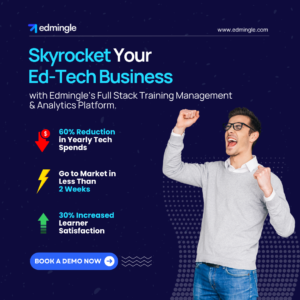
Leave a Reply